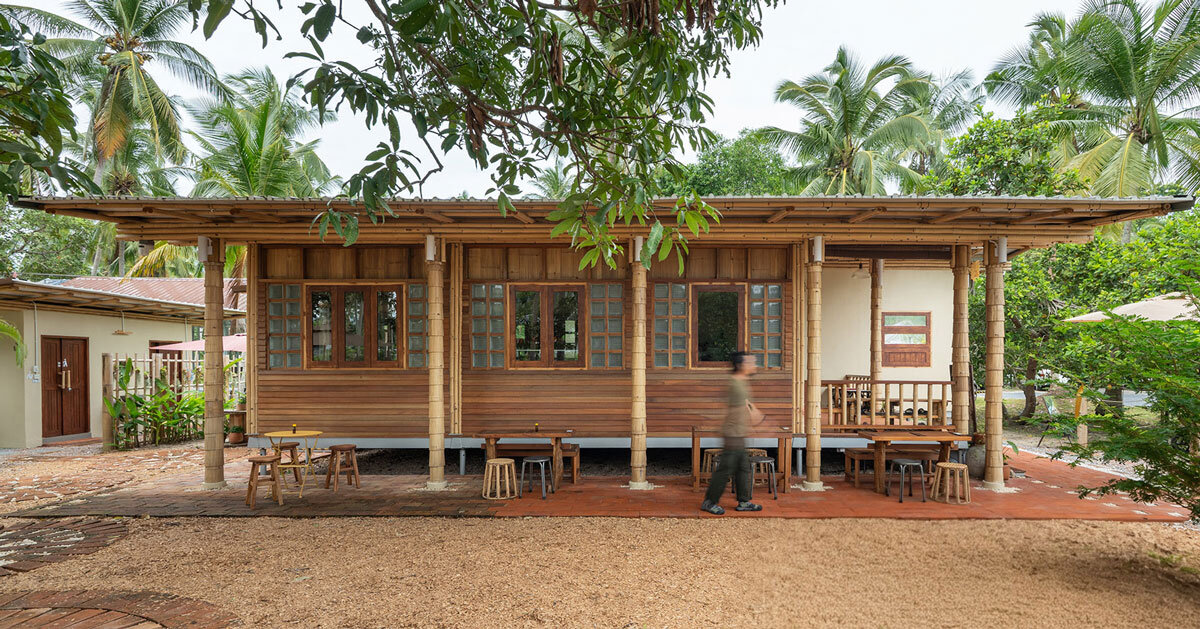Ice Cream Shop’s Bamboo columns reinterpret the coconut grove
Bamboosaurus Studio designs Satimi.sook, an ice cream shop located on Thailand’s Koh Phangan, to reinterpret the site’s former coconut grove through architecture that integrates with its natural and cultural context. The project emphasizes continuity between built form and landscape, using local references to shape both structure and atmosphere. The design concept originates from the geometry and rhythm of the coconut palms that once occupied the site. Structural columns are placed in alignment with the original tree positions, maintaining a spatial rhythm that connects the new structure to its ecological history. A low-gable roof, derived from local vernacular architecture, responds to the tropical climate by reducing wind pressure during monsoon seasons while reinforcing the building’s contextual identity.
Bamboo defines the project’s architectural character, appearing in columns, partial walls, and roof detailing. The material’s tactile quality and local availability establish a visual and material link to the island’s environment. To ensure long-term durability in a tropical setting, bamboo is paired with steel framing, cement board, insulated metal sheets, and glass blocks. This combination allows for efficient construction and improved resistance to humidity and weather exposure.
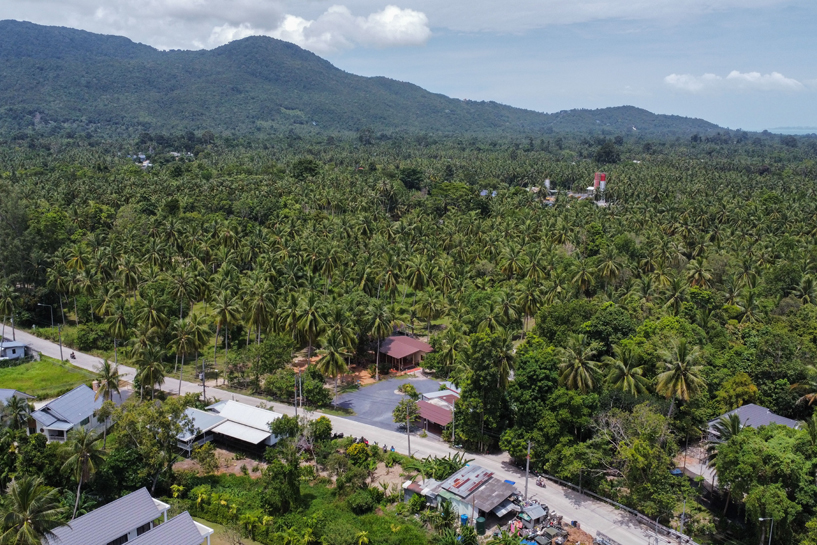
Satimi.sook ice cream shop is located on Thailand’s Koh Phangan | all images by Sarawin Kawin
Bamboosaurus blends timber, bamboo, and steel for the design
Inside, the structural system merges a steel framework with timber framing and overlapping wood cladding to create a warm, cohesive environment. The street-facing facade, composed of timber, bamboo grids, and glass blocks, reflects the vertical rhythm of nearby trees and introduces filtered natural light into the interior. To reduce environmental disruption, the design team at Bamboosaurus Studio employs galvanized helical piles instead of traditional concrete foundations. This lightweight system is well-suited to the island’s sandy soil, allowing for quick installation without vibration or heavy excavation, thereby preserving nearby tree roots. The foundation system can also be dismantled and reused, minimizing construction waste and extending the building’s sustainability lifecycle.
Through its structural rhythm, material composition, and adaptive foundation, Satimi.sook demonstrates how small-scale commercial architecture can engage with landscape and tradition. The project translates the character of Koh Phangan’s coconut groves into a built environment that prioritizes ecological sensitivity, structural clarity, and local identity.
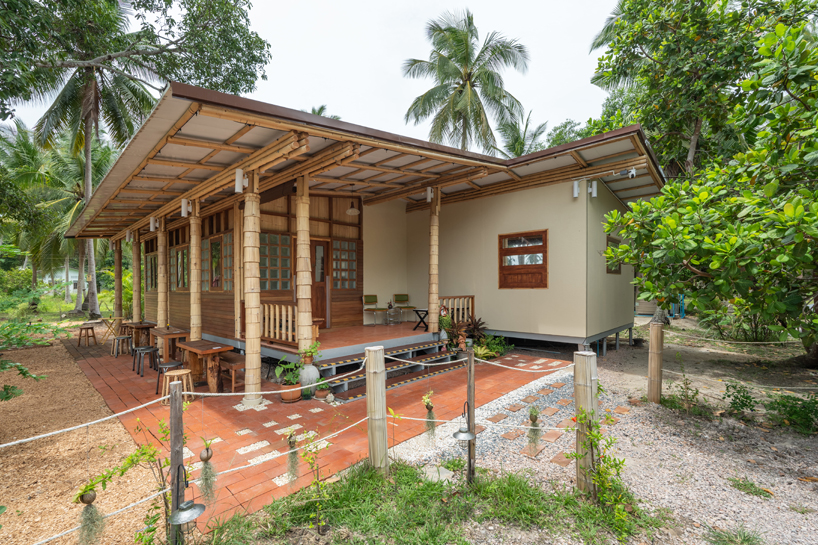
the low-gabled roof mitigates monsoon winds while reinforcing a sense of place
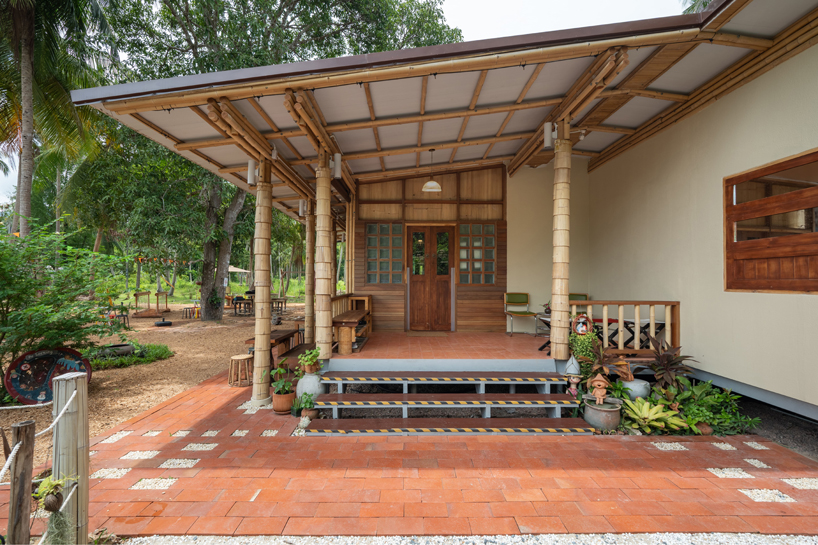
the design draws inspiration from the rhythm and geometry of coconut palms
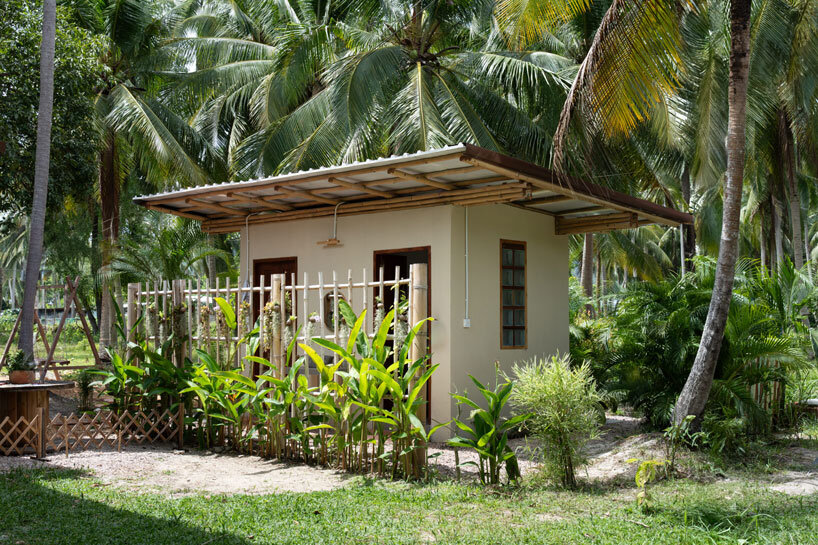
the site is a former coconut grove, interspersed with various native trees

